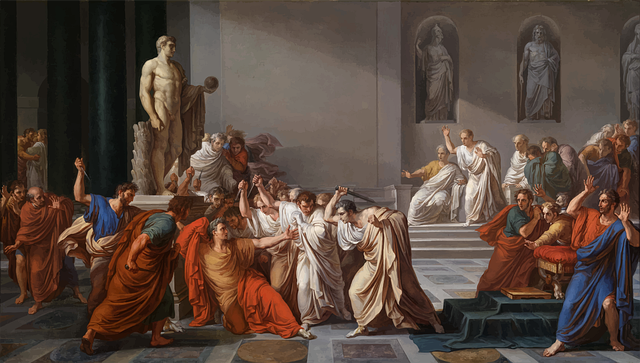Race and ethnicity are concepts that have been central to many societies throughout history. They are often used to justify inequality and oppression, and their impact is still felt today. Understanding the historical roots of these concepts and how they have been treated in different societies is essential for making sense of current events and working towards a more just and equitable future.
Brief overview of main points to be discussed:
In this blog post, we will explore the topic of race and ethnicity in historical societies from a comparative perspective. We will look at how these concepts have been defined and used in different parts of the world and at different times in history. We will also examine the impact of colonialism and imperialism on race and ethnicity, and discuss specific examples from different parts of the world. By the end of this post, readers will have a deeper understanding of the complex nature of race and ethnicity and their role in shaping societies throughout history.
Definition of race and ethnicity:
Race and ethnicity are complex and multifaceted concepts that are often used interchangeably, but have distinct meanings. Race refers to physical characteristics that are used to classify people into groups, while ethnicity refers to a person's cultural or national identity. Both race and ethnicity have been used throughout history to justify social, economic, and political inequality.
Historical perspectives on race and ethnicity:
Ancient societies: Many ancient societies had hierarchies based on race and ethnicity, with some groups being considered superior to others. For example, the ancient Egyptians believed that they were superior to other African peoples, and the ancient Greeks believed that they were superior to other Mediterranean peoples.
Medieval societies: During the Middle Ages, race and ethnicity were often used to justify the subjugation of certain groups, such as the enslavement of Africans by the Arab and Ottoman empires, and the forced conversion of Jews and Muslims by the Catholic Church.
Early modern societies: The early modern period saw the rise of European colonialism, which brought about the forced displacement and exploitation of indigenous peoples. European colonizers also brought enslaved Africans to the Americas, leading to the development of race-based slavery.
Impact of colonialism and imperialism on race and ethnicity:
Colonization and imperialism have had a profound impact on race and ethnicity throughout history. The forced displacement and exploitation of indigenous peoples and the transatlantic slave trade have led to the marginalization and oppression of certain racial and ethnic groups. Additionally, colonialism and imperialism have shaped the way that race and ethnicity are perceived and constructed in different societies around the world.
The impact of colonialism and imperialism on the concept of race and ethnicity cannot be overstated. The forced migration of millions of people around the world, the exploitation of native peoples and the imposition of European culture on non-Western societies all contributed to the development of a world where race and ethnicity were used to justify inequality and oppression.
When it comes to understanding race and ethnicity in historical societies, it is also important to look at specific examples from different parts of the world. In the United States, for example, the legacy of slavery and the ongoing struggle for civil rights have had a profound impact on the way that race and ethnicity are perceived and experienced. In Latin America, the concept of mestizaje and the treatment of indigenous peoples have been central to discussions of race and ethnicity. In Africa, the impact of colonialism and the ongoing ethnic conflicts have shaped the way that these concepts are understood. And in Asia, the caste systems and the treatment of ethnic minorities have been major factors in shaping race and ethnicity.
Comparative Analysis
Race and ethnicity in the United States:
Slavery and its legacy: The United States has a long history of race-based slavery, which has had a profound impact on the country's social, economic, and political landscape. The legacy of slavery can be seen in the ongoing disparities and discrimination faced by African Americans in areas such as education, employment, and criminal justice.
Immigration and its impact on race and ethnicity: Immigration has also played a significant role in shaping the racial and ethnic landscape of the United States. Different waves of immigrants have brought diverse cultures and perspectives, but also faced discrimination and prejudice. The impact of immigration on race and ethnicity is also a complex topic as it's related to the rise of Nativism and White Supremacy movements.
Civil rights movement and its aftermath: The Civil Rights Movement of the 1950s and 1960s was a major turning point in the United States, leading to the end of legal segregation and the expansion of voting rights for African Americans. However, the aftermath of the Civil Rights Movement has been marked by ongoing struggles for racial justice and equality, with issues such as police brutality and mass incarceration continuing to disproportionately affect communities of color.
Race and ethnicity in Latin America:
Mestizaje and its effects: In Latin America, the concept of mestizaje, or racial mixing, has been used to describe the blending of different racial and ethnic groups. However, this concept has also been used to justify the marginalization and oppression of indigenous peoples and Afro-Latinx communities.
Indigenous peoples and their struggles: Indigenous peoples in Latin America have faced centuries of exploitation and marginalization, and continue to struggle for land rights, cultural preservation, and political representation.
Race and ethnicity in Africa:
Impact of colonialism and slavery: Africa has a long history of colonialism, which has led to the forced displacement and exploitation of indigenous peoples, as well as the transatlantic slave trade. The legacy of colonialism and slavery can be seen in ongoing ethnic conflicts and the marginalization of certain ethnic groups.
Current ethnic conflicts: Many African countries are facing ongoing ethnic conflicts, fueled by issues such as political marginalization, economic disparities, and competition for resources. These conflicts often take on ethnic or racial dimensions, and can lead to mass atrocities such as genocide.
Race and ethnicity in Asia:
Caste systems: Many Asian societies have had caste systems, which are hierarchical social structures based on birth and occupation. These systems have often been used to justify the marginalization and exploitation of certain groups, such as the Dalits in India.
Ethnic minorities and their struggles: Many Asian countries have ethnic minorities that face discrimination and marginalization. These struggles can take on different forms, such as the Uighur Muslim minority in China or the Rohingya in Myanmar.
In conclusion, race and ethnicity are complex concepts that have been shaped by a variety of historical and societal factors. By understanding the historical roots of these concepts and how they have been treated in different societies, we can better understand current events and work towards a more just and equitable future. If you are interested in learning more about this topic, we recommend checking out the works of scholars such as Angela Davis, Eduardo Bonilla-Silva, and bell hooks.



